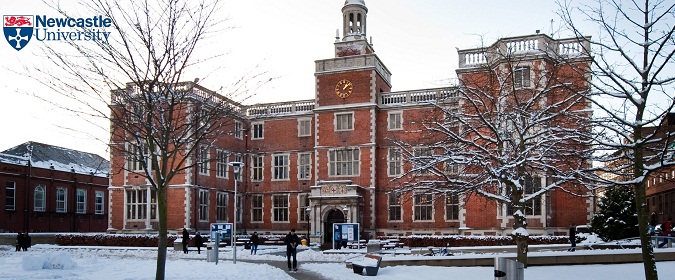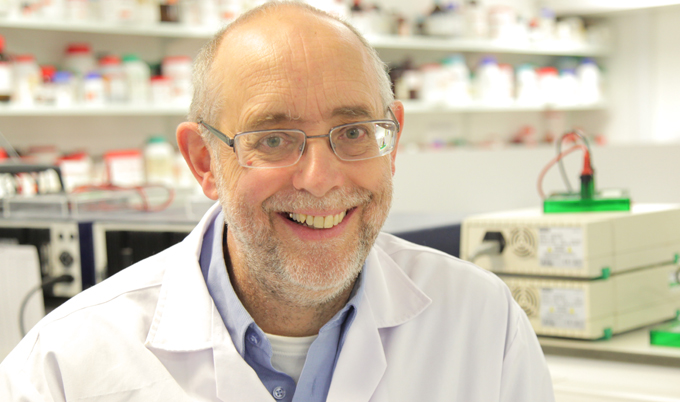Health
Synthetic model to support antibiotic development

Scientists have developed a model of the outer membrane of the bacteria E.coli providing a brand new tool for developing new antibiotics and other drugs in the fight against infections.
First working model

For the first time researchers from Newcastle University and the Science and Technology Facilities Council have produced a working model giving access to unprecedented information about the bacteria which is notoriously hard to study due to its size and complex exterior.
The results, published in the leading chemistry journal Angewandte Chemie International Edition, are featured as a ‘Research Highlight’ in Nature Chemical Biology. (20 October 2015). The work was funded by The Wellcome Trust.
It is well known that all types of disease-causing bacteria are becoming resistant to antibiotics but single-celled Gram-negatives, the group of bacteria that E.coli belongs to, are of special concern because they have an extra wall around their cells which can protect them physically from our treatments. 2013 figures taken from the NHS website show one in five infections involving E.coli is now resistant to a commonly-used antibiotic (ciproflaxin).
Gram-negative bacteria
Jeremy Lakey, Professor of Structural Biochemistry at Newcastle University who led the study explains: “Our model of the bacterial outer membrane can be used as a simulator to test how antibiotic molecules can be made to cross this critical barrier.
“A stable model is so important because the detailed structure of this wall is still not clear, largely because bacteria are very small and have a protective envelope that is only 20 nanometres thick. This model gives us unprecedented access to the structure and dynamics of the membrane.”
Gram-negative bacteria are highly successful organisms. In evolutionary terms, they are believed to have descended from a common ancestor of cyanobacteria, which emerged 3.6 billion years ago. E. coli bacteria live in the digestive tract of people and animals and most are harmless. However, some Gram-negatives cause illnesses such as meningitis, plague, Legionnaires disease, cholera and food poisoning. Understanding the outer membranes of Gram-negative bacteria is important for antibiotic development. However their structure and dynamics are poorly understood because of their small size and inaccurate lab or in vitro models.
Technical explanation
The envelope of Gram-negative bacteria, such as E.coli, is composed of two barriers – the so called inner and outer cell membranes. This double membrane, which is unique in biology, is highly impermeable to incoming molecules and acts as a extremely selective filter.
The nanoscale structure of the membrane was determined using Science and Technology Facilities Council’s ISIS Neutron and Muon source. An instrument called POLREF provided a magnetic contrast neutron reflectivity technique to study the model and find out where each component was. This allowed the precise molecular composition to be resolved, showing accurate details of the model such as the molecular asymmetry and the thickness of the internal water layer.
“We now are able to undertake studies on model bacterial membranes under conditions which much more closely resemble those found of live bacteria than has previous been possible”, said Dr Luke Clifton from ISIS. “Neutron scattering allows us to resolve complex structures composed of mixtures of biomolecules. By combining this with isotopic labelling, to which neutrons are very sensitive, we were able to determine where each component of the model was”.
Dr Clifton and co-workers went on to test the response of the model to antimicrobial proteins produced in our bodies, including lysozyme and lactoferrin. Interactions of these proteins with the outer membrane in vivo and in vitro are well known, allowing for direct comparisons with the synthetic model. Neutron reflectivity revealed that the experiments reproduced in vivo behaviour, replicating the disruption of the outer membrane previously seen in living bacteria.
Professor Lakey adds: “The model behaves in a way that you would expect of a living bacteria which opens up exciting opportunities for researchers to test new compounds.”
The next challenge for the researchers is to begin incorporating membrane proteins into the bilayer.
Reference: An Accurate In Vitro Model of the E. coli Envelope. Luke A. Clifton, Stephen A. Holt, Arwel V. Hughes, Emma L. Daulton,
Wanatchaporn Arunmanee, Frank Heinrich, Syma Khalid, Damien Jefferies,Timothy R. Charlton, John R. P. Webster, Christian J. Kinane, and Jeremy H. Lakey
DOI: 10.1002/anie.201504287

























































